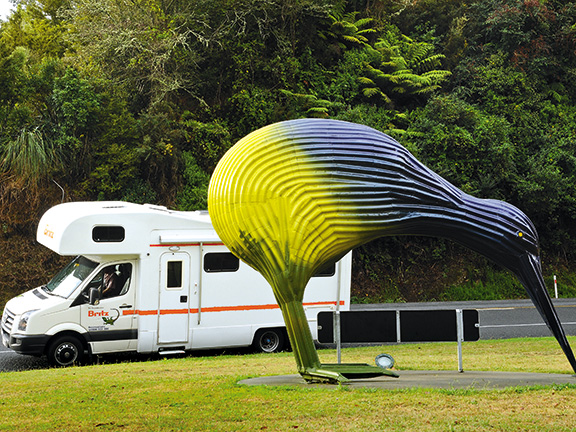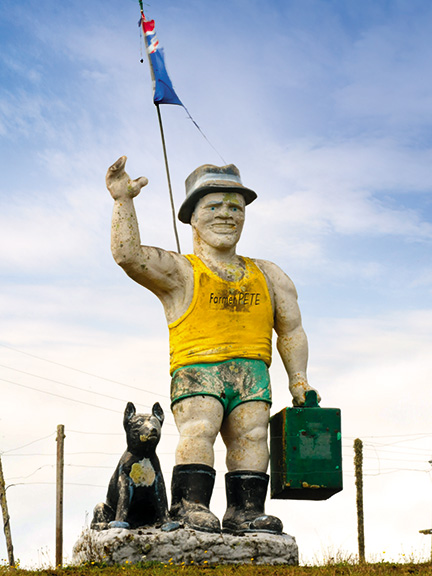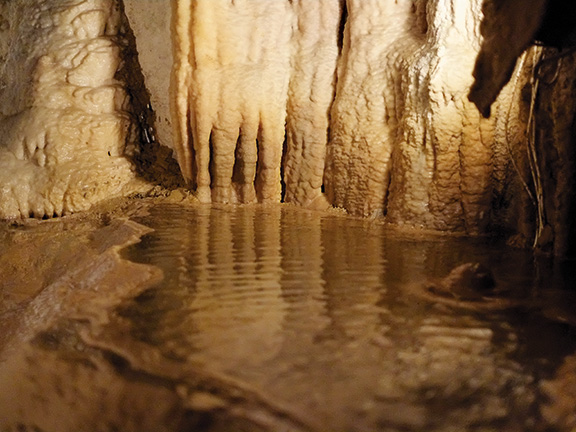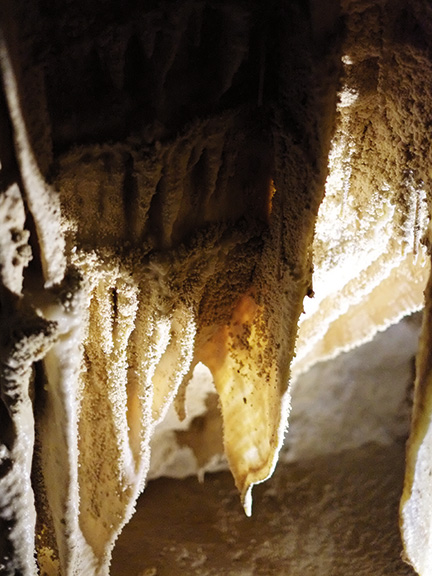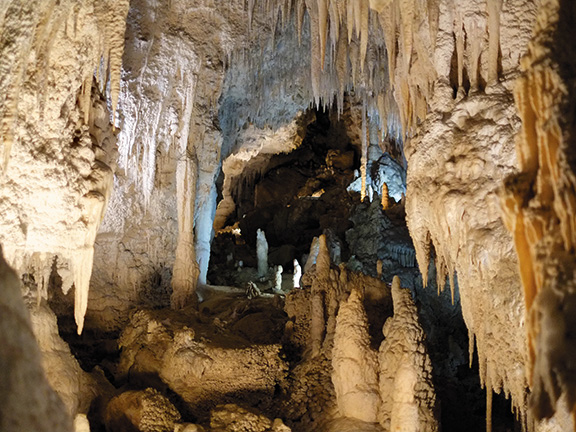It has rained (a lot) and after a dry, brown summer, the King Country is lush, green, and gorgeous. We trundle down Highway 1 in our big Britz motorhome, and stop at a rest area near Otorohanga for lunch and a cuppa.
That's why I love motorhomes: you take the kitchen and other home comforts with you. I gaze out over the pretty countryside and marvel that it has only taken a couple of hours to drive here from Auckland.
We're on our way to Waitomo Caves, mindful that it is 125 years (1889) since Waitomo Glow-worm Cave first opened to the public.
Discovery and opening the caves to tourists
Waitomo village is rural, spacious, and compact enough to easily to walk to the visitor centre, Glow-worm Cave, pub and cafes. The Britz gets a park under a canopy of trees, autumn leaves prettily dropping around and on it, in the Waitomo Top Ten Holiday Park.
The Holiday Park is a delightful place to park up and Sam backs Britz in to her spot so the living area faces out over the wide valley and into the sun. A bonus, when it gets dark, is the two moreporks who sit together in a tree a few metres away, hooting happily.
In the morning, just after the caves open, I meet Huia Davis, the head guide. Huia is the great grandson of Chief Tane Tinorau, who, along with English surveyor Fred Mace, first explored the glow-worm cave in 1887.
Huia explains that local Maori knew of the cave's existence but the subterranean caverns had never been extensively explored. "Tane was initially reluctant to enter the caves because there was a taniwha in the river and huge, scary eels. Also, many caves are considered tapu, because they are entrances to the underworld, though this one isn't tapu.
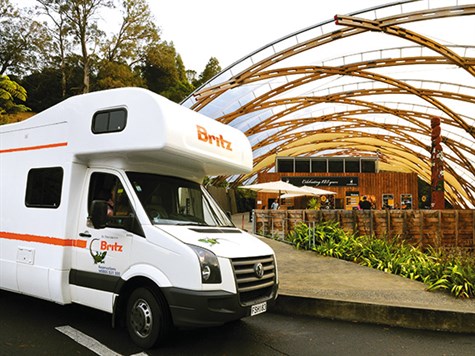
"They built a raft of flax stems and floated into the cave, where the stream goes underground, using candles for lighting. They soon discovered the Glow-worm Grotto, with its myriad tiny bright lights, from thousands of glow-worms dotting the cave ceiling."
Tane Tinorau and Fred Mace poled towards a suitable rocky outcrop and left the raft to explore the lower levels of the cave. They found themselves surrounded by crystalline stalactites and stalagmites. They returned many times to explore further and, on an independent trip, Chief Tane discovered the upper level of the cave and an easier entry-point on land.
By 1889, Tane, with the help of his family, opened the cave to tourists. Visitor numbers soared and Tane and his wife Huti escorted groups through the cave for a small fee. "Over time, the family became quite prosperous and were able to build a smart European-style villa on the hill," Huia says.
In 1906, the administration of the cave was taken over by the government and, along with the Waitomo Hotel, soon had a major tourist operation going.
Huia explains that Tane and his whanau did not sell the land to the government and this was a grievance that was not rectified until the caves were returned to the descendants of Tane — some 3000 of them — in 1990 as part of a Treaty of Waitangi settlement. They are presently managed by Tourism Holdings Ltd.
My voyage into Waitomo Glowworm Caves
Sam and I join Huia's 9.30am tour of the Glow-worm Caves. Though I have visited this cave many times, the beauty of the stalactites and stalagmites is always impressive.
When we get to the great cavern, The Cathedral, with its stalactite pipe organ frozen forever in silence, Huia sings a waiata. The acoustics are excellent and his song is impressive. It's a magic moment.
The darkness of the Glow-worm Grotto and the awesome sight of thousands of tiny lights in the dark reduce the chattering group to silence. Huia pulls the boat ever-so-gently around the grotto, and then, around a few corners, the light from the river's entrance penetrates the darkness.
Soon we are disembarking on the same bank of the river that Fred and Tane used when they first explore this cave 125 years ago. In those days there was no café and gift shop at the end of the pretty bush walk back to the visitor centre.
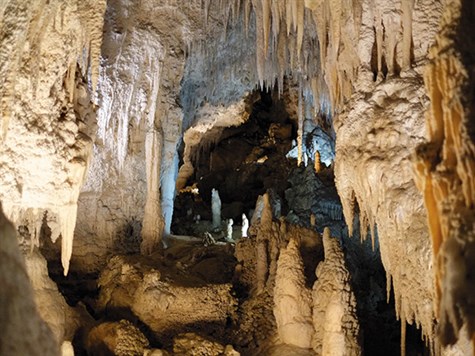
Aranui Cave, though it does not have the river or the glow-worms, has its own awe-inspiring beauty. The massed delicacy — strings of pearls, a curl of white silk, long slender needles of crystal — of the millions of stalactites is simply gorgeous.
At the end of the cave, in a cavern where a rockfall a million or two years ago created a staircase effect, the Fairy Grotto, completely covered in myriad fantasy formations with crystal ponds and sparkling, dripping water, is incomparably beautiful.
Our guide, Doreen Te Kanawa, explains that Aranui Cave was formed on an earthquake fault and the seeping of rainwater through the limestone above means that almost every part of the roof and walls are adorned with fragile, sparkling forms in fawn, pink, and white.
Doreen tells the story of young Maori, Ruruku Aranui, who was chasing wild pigs and both the pigs and his dog disappeared half way down a steep bush-covered hill. The dog's barking led him to the cave, which he later explored with the manager of Waitomo Glow-worm Cave.
This discovery of what was named Aranui Cave, in 1910, was a national marvel and a few months later it was officially opened to the public.
We highly recommend you visit them both when you’re in King Country.
For the latest reviews, subscribe to Motorhomes, Caravans & Destinations magazine here.

